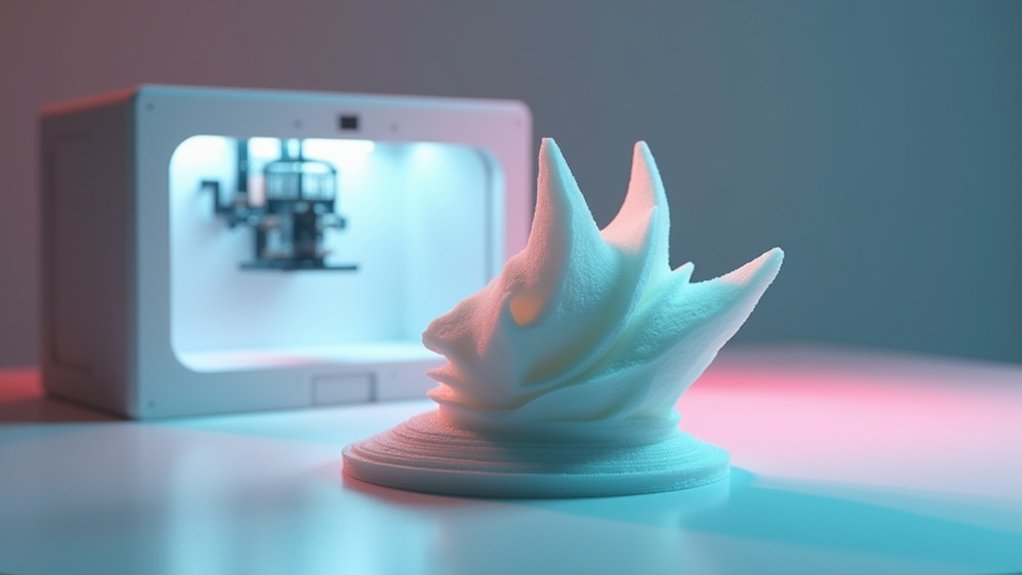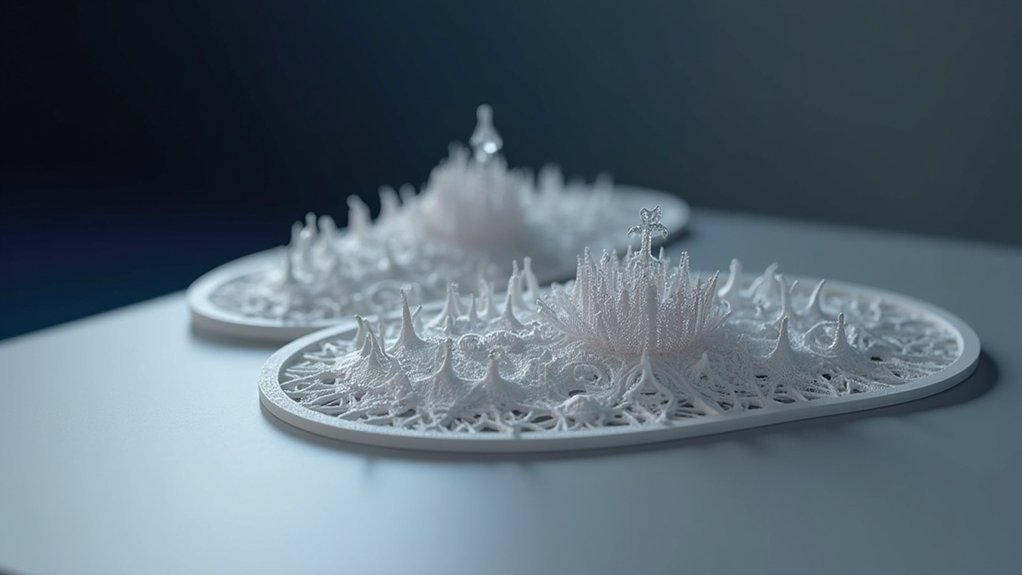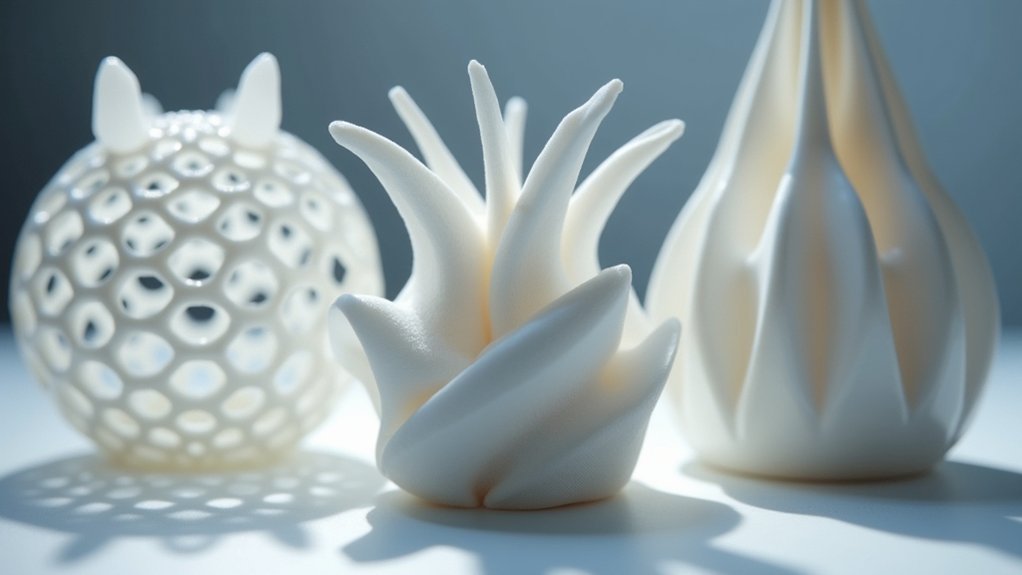You’ll master support-free 3D printing by applying the 45-degree rule—keeping overhangs below this angle guarantees proper layer adhesion without supports. Design bridges under 5mm and use arches to distribute weight effectively across your model. Strategic model orientation on the print bed transforms challenging geometries into printable designs. Integrate background elements like clothing or environmental features to support extended parts naturally. These techniques reduce material waste, eliminate post-processing time, and open up advanced printing possibilities you haven’t explored yet.
The 45-Degree Rule for Overhang Management

While 3D printing technology has advanced considerably, you’ll still encounter limitations when printing overhangs without proper support structures. The 45-degree rule provides a fundamental guideline: overhangs exceeding 45 degrees typically require supports to prevent deformation during printing.
When you design with overhang angles below this threshold, each layer maintains at least 50% contact with the layer beneath, enabling successful model without supports printing.
You can optimize print efficiency by implementing gradual shifts and structural enhancements in your designs. Modern slicing software allows you to apply these principles automatically, identifying problematic angles and suggesting modifications.
Following this rule greatly improves print quality while reducing material consumption and eliminating time-consuming removal of supports during post-processing.
Bridge and Arch Design Strategies
Beyond managing overhangs through careful angling, you can leverage bridge and arch geometries to create stunning support-free prints that maintain structural integrity.
Bridge designs work best when you keep spans under 5mm, allowing filament to stretch across gaps without sagging. Arches distribute weight through curved forms, making them excellent for structural applications while eliminating support requirements.
Keep bridge spans under 5mm to prevent sagging while using arches to distribute weight and eliminate support needs.
You’ll achieve better results by incorporating gradual slopes that enhance layer adhesion during the printing process.
Cantilever designs offer another powerful approach—fixing one end while extending the other outward creates functional elements without supports. Tapering the ends of your overhangs and bridges increases stability and prevents deformation.
These design strategies effectively reduce necessity for external supports while maintaining both functionality and visual appeal.
Model Orientation and Background Support Integration

Strategic positioning of your model on the print bed transforms challenging geometries into printable designs without traditional supports. You’ll achieve ideal configurations by adjusting model orientation to keep overhang angles below 45 degrees, ensuring superior layer adhesion throughout your printed parts.
The “background as support” technique revolutionizes how you approach structural features in your designs:
- Integrate clothing and hair into character models to naturally support extended limbs.
- Incorporate environmental elements like trees, walls, or pedestals that provide structural backing.
- Design connecting bridges between floating elements using thin structural features.
This creative incorporation strategy lets you minimize supports while maintaining aesthetic integrity.
You’ll discover that testing different orientations reveals configurations where background elements seamlessly blend into your design, serving dual purposes as both visual components and essential structural support for challenging overhangs.
Frequently Asked Questions
What Is the Best Support Style for 3D Printing?
You’ll find tree supports work best for most 3D printing projects. They use less material, leave minimal marks, and remove easily. Consider soluble supports for complex geometries requiring pristine surface finishes.
How to 3D Print Without Supports?
You’ll achieve support-free printing by following the 45-degree rule, optimizing part orientation, adding chamfers and fillets, designing bridges and arches, and adjusting your printer’s temperature and layer height settings.
Is SLA or FDM Better?
You’ll find SLA delivers superior detail and smoother finishes, while FDM offers better material variety and cost-effectiveness. Choose SLA for precision miniatures, FDM for functional parts and budget-conscious projects.
What Is the Best Support Setting for PLA?
You’ll get ideal PLA support results using 185°C printing temperature, 0.6mm interface thickness, and 0.1-0.2mm distance from model. Enable support interfaces in Cura and test different patterns for your specific design.





Leave a Reply